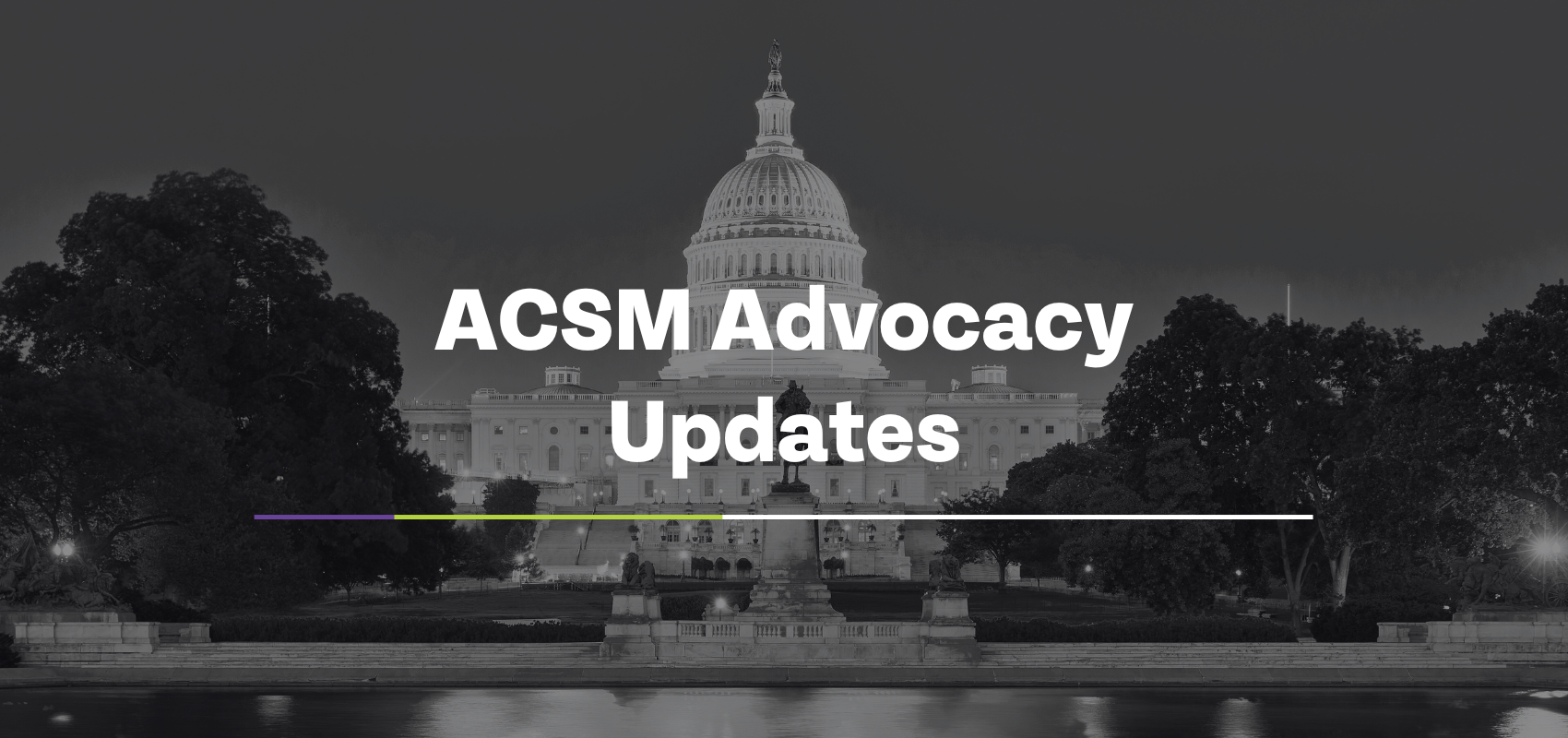ACSM’s governmental affairs staff and the Health and Science Policy Committee continue to track, assess and react to developments in the new Congress and administration. Here are the most recent activities we are monitoring in order to best serve our members and certified professionals.
HHS Workforce Reductions and Realignment
On March 27, 2025, the Department of Health and Human Services (HHS) announced a major workforce reduction and organizational restructuring. The department plans to cut 10,000 full-time positions and reduce its overall workforce from 82,000 to 62,000 employees. These reductions include 3,500 positions at the Food and Drug Administration (FDA), 1,400 at the Centers for Disease Control and Prevention (CDC), 1,200 at the National Institutes of Health (NIH), and 300 at the Centers for Medicare & Medicaid Services (CMS). HHS estimates that these cuts will save $1.8 billion annually.
Additionally, HHS will consolidate its 28 divisions into 15 and reduce its regional offices from 10 to 5. Key changes include merging the Office of the Assistant Secretary for Health (OASH), Health Resources and Services Administration (HRSA), Substance Abuse and Mental Health Services Administration (SAMHSA), Agency for Toxic Substances and Disease Registry (ATSDR) and National Institute for Occupational Safety and Health (NIOSH) into a new division called the Administration for a Healthy America (AHA). The Administration for Strategic Preparedness and Response (ASPR) will be integrated into the CDC, while programs from the Administration for Community Living (ACL) will be distributed among the Administration for Children and Families, Assistant Secretary for Planning and Evaluation (ASPE), and CMS.
Confirmations
On March 25, 2025, the Senate confirmed Marty Makary, MD, as FDA commissioner in a vote of 56-44 and Jay Bhattacharya, MD, PhD, as NIH director along party lines, 53-47. On the same day, Mehmet Oz, MD, was advanced as CMS administrator by the Senate Finance Committee with a party-line vote of 14-13. Subsequently, on April 3, Dr. Oz was confirmed by the Senate in a 53-45 vote. Meanwhile, President Trump nominated Susan Monarez, PhD, to lead the CDC after withdrawing the nomination of Dave Weldon, MD, due to concerns over his vaccine safety remarks amid a measles outbreak. Dr. Monarez, currently acting CDC director since January 2025, has held roles at ARPA-H, Homeland Security and the National Security Council. If confirmed, she would be the first non-physician to lead the CDC in more than 50 years. Her Senate confirmation hearing remains unscheduled.
As we do with all new appointments tied to ACSM’s vision and mission, we will seek opportunities to meet with appointees and their staff, where appropriate.
Budget
On April 10, 2025, the U.S. House of Representatives narrowly approved a revised budget resolution by a vote of 216-214, following the Senate’s passage of the measure on April 5, 2025, with a 51-48 vote. The resolution represents a significant compromise between House and Senate Republican leadership and aims to implement $1.5 trillion in spending cuts while advancing President Donald Trump’s legislative agenda.
The budget framework includes provisions for extending tax cuts originally enacted under the Tax Cuts and Jobs Act of 2017, alongside up to $1.5 trillion in new tax reductions. Additionally, it raises the debt ceiling by $5 trillion — a contentious issue among fiscal conservatives. A key element of the resolution is its directive for the House Energy and Commerce Committee to achieve $880 billion in spending reductions, which is expected to involve cuts to Medicaid and other health care programs. The House Education and Workforce Committee is also tasked with reducing spending by $330 billion over the next decade.
The resolution faced resistance from hardline conservatives within the Republican Party, who expressed concerns about its impact on the national debt and demanded deeper spending cuts. Speaker Mike Johnson (R-LA) and Senate Majority Leader John Thune (R-SD) assured dissenting members that the $1.5 trillion savings target would be met during the reconciliation process, ultimately securing their support.
With both chambers having adopted the budget resolution, Congress will now begin crafting a reconciliation bill to implement its provisions. This process will involve detailed legislative work by various committees tasked with aligning their proposals with the resolution’s instructions. Lawmakers have until May 9 to report their legislative changes, although this deadline is nonbinding.
The reconciliation process allows Republicans to bypass Senate filibusters and pass legislation with a simple majority vote, enabling them to advance policies on tax relief, border security, defense funding increases and mandatory spending cuts. However, achieving consensus between House and Senate Republicans on specific measures remains critical for finalizing the bill before it is sent to President Trump for enactment.
ACSM will continue to assess developments in the new administration and potential impact on our members and exercise professionals and determine the best course of action.
As always, feel free to contact me at mward@acsm.org with any questions, concerns or suggestions regarding how we can best advocate for you and your profession on Capitol Hill.




